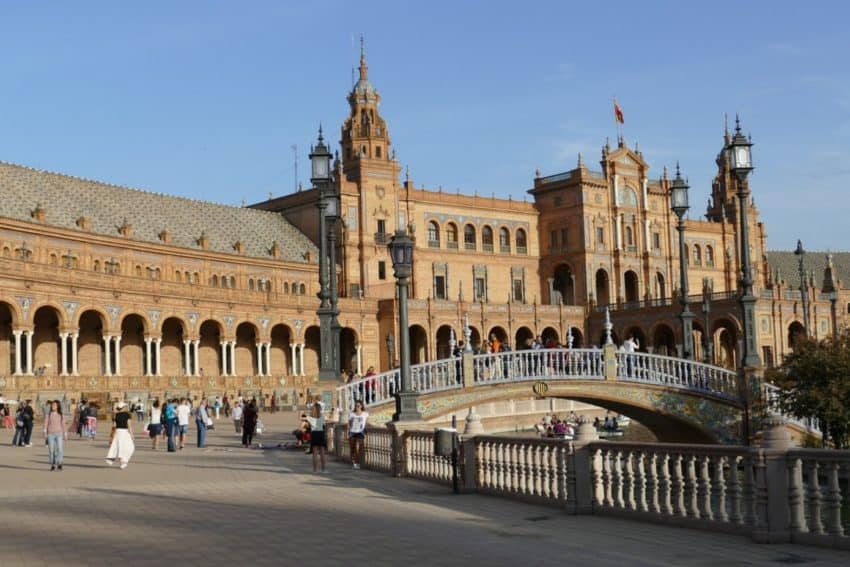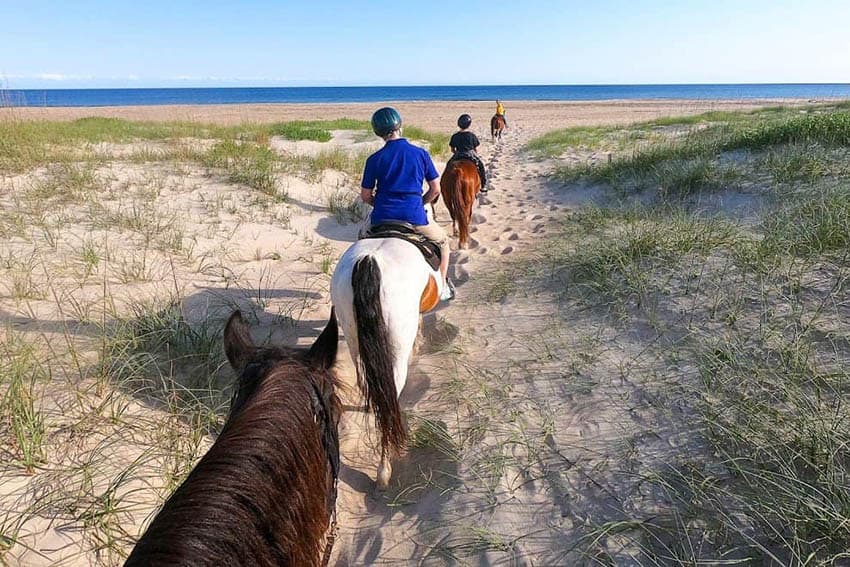The Best of Beijing: What to See, Where to Go, What to Do
By Marilyn Pennell
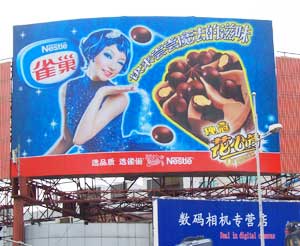
Are you headed to the Olympic Games or considering a trip to China? Learn more about summer travel to this ancient and intriguing capital.
Imagining Beijing
Beijing is not the largest city in China. It isn’t the richest and it isn’t the oldest. But a trip to China without a visit to the capital city of Beijing would be to miss the chance to get a glimpse into the heart and soul of China.
A journey to this 2,000-year-old capital, however brief, will allow you to soak up a sense of how China’s past and present are blending to forge a new identity and chart a new course.
But the Beijing in your mind’s eye may not be the reality of Beijing as it is today. When you think of Beijing, do you imagine scenes from “The Last Emperor” with courtesans, concubines, and eunuchs?
Do you hope to see farmers in coolie hats leading water buffalo among sweet green rice paddies?
Do you expect to encounter dull grey buildings with “worker bees” wearing blue-grey Mao suits and toting the “Little Red Book.”
Modern Beijing offers none of these scenes, though its history reflects all this and more.
If you’re headed to Beijing or are just thinking about taking a journey into the heart of the “dragon,” as Beijing is sometimes called, you’re in for a unique cultural and historical experience.
Beijing: The City
Though it isn’t the largest city in China, Beijing is huge, with about 13 million official residents and two million migrant workers. It is packed with larger-than-life historical sites and small out-of-the-way alleyways teeming with life.
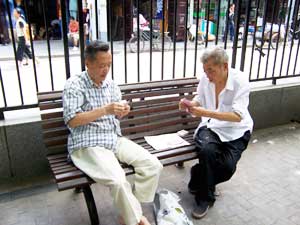
If you go to Beijing with an open mind and search out its hidden treasures, as well as the grand historical sites, you won’t be disappointed. I recommend a blend of both, as a way to get a taste of the historical and cultural grandeur, as well as the simple everyday pleasures
Getting around the city won’t be easy, but it can be done. A Chinese-speaking tour guide certainly helps, since English is not widely spoken. If you’re a first-time visitor, your best bet is to hire a local tour guide.
The prices are reasonable and you’ll enjoy the city more with someone who knows the lay of the land.
If you do venture out by yourself, you should do a little research about the five so-called “ring roads” that radiate out from the center of the city, which is located near Tiananmen Square and the Forbidden City. Traffic can get congested since bicycles aren’t the preferred mode of transportation these days, so be prepared.
The first of the five ring roads encircle the Forbidden City at the city center. It is here, in the heart of this ancient capital, that you can visit many of the major sites that bear witness to centuries of Chinese dynastic history.
Tips:
*Don’t rent a car or drive on your own. There are more than three million vehicles on the road in Beijing. Much like Chinese calligraphy, the rules of the road are not easily decipherable. Take a tour bus or a taxi instead.
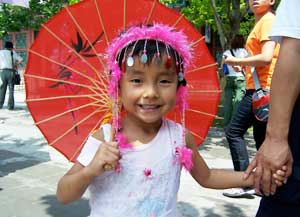
*Taxis are inexpensive though most drivers don’t speak English. Chinese taxis are not as roomy as Western taxis. Most can only fit four average-sized people, at best.
One of the first stops on your itinerary should be Tiananmen Square, the site of the 1989 pro-Democracy student protests. It is also where Chairman Mao proclaimed the formation of the Peoples’ Republic of China and the Red Guards rallied during the Cultural Revolution.
Tiananmen Square is the world’s largest public square. During the summer, on average, about 20,000 people visit the square every day. Prepare for elbow-to-elbow crowds. You can also expect very warm –- in fact hot — weather. Dress for it!
Walking among the throngs of people, you’ll see tour guides waving flags in the air with groups of visitors from around China and the world following behind like eager puppies. Chinese tourists snapping photos are everywhere and people of all ages stroll around carrying pastel parasols and flying kites.
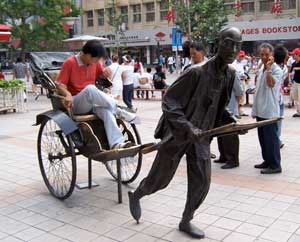
These colorful crowds fill the square to get a glimpse of history and each other. If you travel with a group, be sure to stay together. Getting lost amidst a huge sea of people, most of whom probably don’t speak your language isn’t fun. It happened to me and it took about an hour to catch up with my travel mates.
Beijing Tips:
*Get a business card written in Mandarin from your hotel before you venture out. If you get lost, it can be a lifesaver.
*“BYOTP” i.e. Bring your own toilet paper. Public buildings in China usually do not provide it. So, don’t leave home without your own supply.
*While in this “peoples’ park” be sure to see The Great Hall of the People, which is home to the National Peoples’ Congress
Mao Mausoleum:
A visit to the mausoleum, located in Tiananmen Square, is an eerie and strangely moving experience, Be prepared for a long wait (up to an hour) in line to get a thirty-second glimpse of the embalmed body of the former leader of the PRC.
Mao’s body has been on public view since his death in 1976. (Rumor has it that there are actually two or more “Maos” i.e. the real embalmed body and a wax replica or two).
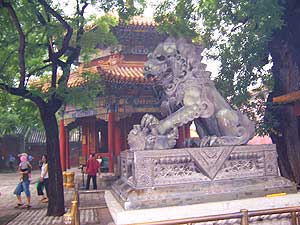
At any rate, what is perhaps most impressive in the mausoleum are the Chinese who still come to lay flowers at Mao’s feet, a testament to his enduring legacy in China.
The Forbidden City
At the north end of the square, a huge portrait of Chairman Mao hangs above the Gate of Heavenly Peace (or Tiananmen Gate), at the entrance to the Forbidden City (which is also known as The Palace Museum).
This 200-acre maze of courtyards, gates, and halls once housed 24 different emperors of the Ming and Qing Dynasties along with their families and courts. A visit to the Forbidden City could take anywhere from two hours to a full day or more to appreciate all that this 500-year-old palace has to offer.
Even if you aren’t a history buff, a walk through the complex is still a visually stimulating and thought-provoking experience. The traditional Chinese architecture is very striking with its curved roofs, colorful lacquered eaves, brightly painted ceilings and doorways, and walls of red, gold, and green, layered with dragons and calligraphy.
Yellow, the symbol of the royal family, is the dominant color in the Forbidden City. The roofs are built with yellow glazed tiles and many of the decorations in the palace are painted yellow. Even the bricks on the ground are yellow.
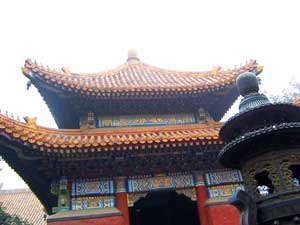
Tips:
*A good way to begin your tour is to rent an audio player with headsets at the entrance that can help guide you through the main hall of the complex.
*English-, Japanese- and Chinese-speaking tour guides are also available.
*If you want a break from the crowds, there are few parks just outside of the Forbidden City. One is Zhongshan Park, which has a flower garden only open in the summer. The Working People’s Cultural Palace and The Imperial Ancestral Temple are also nearby.
The Temple of Heaven
If you want to see even more of traditional China, The Temple of Heaven (also called Tiantan) south of the city center, should be your next stop. It was originally built as a site for imperial sacrifices and prayer for good harvests. Followers of numerology and feng shui will be impressed with the fact that the temple grounds, which are double the size of the Forbidden City, were designed with these concepts in mind.
What seemed to attract the most attention the day I visited was The Circular Mound Altar, located south of the Imperial Vault of Heaven. Here groups of students, seniors and the middle-aged gathered, hopping up and down on a circular disc, laughing, stamping, and yelling, for what purpose I didn’t really understand.
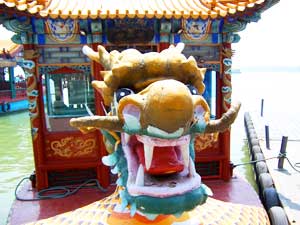
After doing some follow-up research, I discovered that the three tiers of the altar represent the heavens, earth, and mortal realm. I’m still not quite sure what the hopping and hollering meant but it did seem to make the sound reverberate. It was a very hot July day so maybe people were praying for rain!
The Summer Palace
Before you make your way to the Summer Palace, do a little background research about the life and times of Empress Dowager Ci Xi, who lived in the palace from 1889 to her death in 1908. Ci Xi is a notorious and controversial figure in the history of imperial China.
She came to the imperial court as a concubine and rose to power under the rule of her young son, The Tongzhi Emperor and her young nephew, the Guangxu Emperor. At one point during her rule, she imprisoned her nephew, the Guangxu Emperor in order to establish herself as ruler.
On a bright summer day, the palace grounds are overflowing with throngs of children, families, and tourists relaxing on the promenade along the shores of Kunming Lake. Exotic multicolored dragon boats glide by on the man-made lake and are available to the public should you desire a ride.
But don’t try to hitch a ride on the Marble Boat. This “boat” is a two-story, stationary building constructed of marble and stained glass. Ci Xi allegedly had the “boat” built with embezzled funds. Legend says that it was her favorite place to have tea.
Ci Xi’s influence also extends to the Hall of Benevolent Longevity, where she held court. It has a lovely view of the lake and is furnished just as Ci Xi left it. Nearby is the Hall of Jade Ripples where Ci Xi had her nephew imprisoned while she ran China in his name.
Summer Palace Sunday
If you like people watching and want a more relaxed experience at the Summer Palace, go on a Sunday. This is when the locals come out to play.
On any given Sunday, you can see people using buckets of water and big bristly brushes to paint calligraphy poems on the sidewalks and couples practicing ballroom dancing accompanied by Western music from portable boomboxes.
One of the most memorable scenes on my Sunday visit was a group of older men playing “Jingle Bells” on traditional Chinese instruments, while a fifty-something woman sang traditional Chinese songs nearby and another group of men and women played a lively game of Chinese chess.
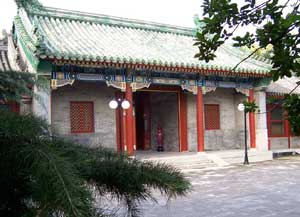
Hidden Treasures of Beijing
The old Beijing is quickly morphing into the “new Beijing.” Though much of the ancient charm is still evident, everyday old buildings are being torn down and rebuilt, much to the chagrin of many locals.
So, to discover hidden gems, one has to search and spend some time away from the crowds. These are just a few of the many “small delights” you may find along the way.
Hutong
To experience the old Beijing, a visit to a “hutong” is a must. Hutongs are narrow back alleys formed by rows of siheyuan, or traditional courtyard homes. As China has modernized, the number of Beijing hutongs has dropped substantially as bulldozers make way for new roads and buildings.
A walk through a hutong is like taking a step back in time. Life is lived on the streets and it isn’t unusual to see groups of people sitting in the alleys playing cards, hawking vegetables, and cooking food on outdoor grills.
The preferred mode of transportation in these narrow alleyways is either foot or pedicab-style rickshaws. Though it may seem a bit touristy, a good way to see and experience the hutong is a tour by pedicab. My tour included a stop at a traditional courtyard home where our group helped make lunch with the family who lives there.
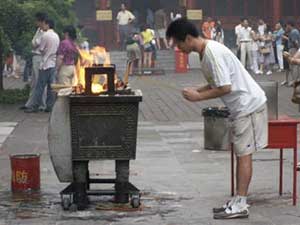
The family’s home was set in a quiet quadrangle, a haven from the clatter of the street. At the center was a beautiful green garden. Mrs. Wang and her husband and children rushed about, in and out of the courtyard, as they prepared lunch.
My travel mates and I helped out by taking turns rolling dough for gyoza, the beloved Chinese dumplings. When lunch was ready, we all sat down together and celebrated with a traditional Chinese toast.
The Drum and Bell Towers
These two sites, located in the Dongcheng District, aren’t major attractions in Beijing. But both are well worth your time. At the Drum Tower, it is a steep climb up a dark 600-year-old stairway to the top level, where you can sneak a peek at the city below.
But the real show is an hourly ten-minute performance by a group of young men and women dressed in bright red tunics. The performers rhythmically beat wooden drumsticks on huge barrel-shaped drums.
The drumbeats echo throughout the high ceilings of the old hall as orderly rows of schoolchildren on class trips sit transfixed.
Until the 1920s, the 24 drums housed in the tower kept time for the city. Now, only one of the original drums remains. Nearby is the Bell Tower, which was also used as a way to keep time
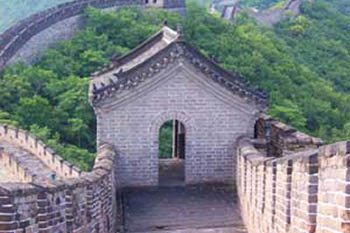
The Lama Temple
The most visited religious site in Beijing is the Tibetan Buddhist Lama temple, also known as the Longhe Monastery. Tibetan Buddhism is more commonly practiced in Western China, so a visit to the Lama Temple is a rare opportunity.
What makes the Lama Temple special is that it is an active site for Buddhist worship and a place to appreciate the fervent and loving devotion of Buddhists in China. The atmosphere at the temple is almost intoxicating.
The smell of incense floats among the red pagodas painted in red, green and gold as worshippers light joss sticks and clasp their hands in prayer.
Though most Buddhist temples in Beijing were destroyed during the Cultural Revolution, this one remains. Some say the government keeps the temple going as a token gesture to the exiled Dalai Lama and his followers in the Tibetan Autonomous Region.
Tips:
*When visiting temples in China, dress appropriately. Women should avoid low-cut tops and shorts and men should wear conservative shirts and pants.
*Be aware that people come to worship so try to be sensitive with cameras. In general, Buddhist monks are not allowed to be photographed
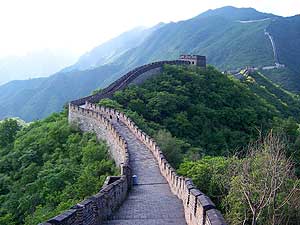
Beyond Beijing: The Great Wall
What’s so great about the Great Wall? There isn’t enough space here to list everything that makes this iconic creation the stuff of legend. It stretches along a winding path from the Yellow Sea to the Gobi desert, through five provinces and two autonomous regions.
Whether seen from a distance or up close, breathtaking is about the only word that can come close to describing it.
There are three main public entry points to the wall and all are roughly a drive of an hour or two from Beijing. The section of the Great Wall at Badaling is the closest to the city and is known as the place where visiting VIPs go for a quick photo op.
Access for people with disabilities is best at Badaling. Visitors can either walk up or take a cable car to the top. But beware of crowds, souvenir shops, and other tourists.
The Great Wall at Simitai is the furthest from Beijing. This section of the wall is for adventurers. It is largely unrestored, with high peaks, tough climbs, and great vistas.
The Great Wall at Mutianyu is located about sixty miles from Beijing. This is the section of the wall that former President Bill Clinton visited. They say his name is inscribed on one of the cable cars.
The Great Wall at Mutianyu
I visited The Great Wall at Mutianyu, which is a longer drive from Beijing than Badaling but not as far as Simitai. The walk from the parking lot to the lowest point on the wall is a strenuous hike.

Fortunately, you can also take a cable car to the highest section, which is an adventure unto itself. Swaying high over the forested canyon as it made its way up, our little red cable car somehow delivered my companions and me safely to our destination.
After hopping off the cable car, I was a bit surprised to see groups of Chinese businessmen on cell phones, a man dressed up like Genghis Khan and grannies with small children out for a day of hiking.
I decided to pose with Genghis Khan for a photo and then climbed a few steps and got my first glimpse of the wall up close. It literally took my breath away. Set against a clear (yes, clear) blue sky and a green forest that seemed to stretch for miles, the sight left me speechless and I dropped my camera, so my first video was a bit shaky.
Shaky video aside, the Great Wall is a photographer’s paradise. If photography isn’t your thing, you can walk for miles along the wall, stopping at lookouts along the way.
Don’t be surprised to see people of all ages from all over the world doing exactly what you’re doing. But there’s plenty of space for everyone.
One of my sweetest memories of my meanderings along the Great Wall is of a young Chinese couple with their toddler-aged son. He was dressed in a red T-shirt with Chinese characters and a pair of baby blue jeans. He couldn’t have been more than two years old but he toddled along the rocky path like a trouper, with the encouragement of his doting parents.
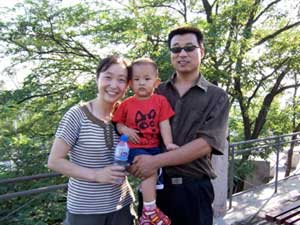
I kept bumping into this family at every turn. Each time we met they nodded enthusiastically as I attempted to communicate with my two basic words of Chinese, Nihao and Xie Xie. I didn’t want to be intrusive so I didn’t take the toddler’s picture, though I really wanted to.
Finally, after bumping into each other for the fourth time, the parents seemed to read my mind and posed with the little boy for me, smiling from ear to ear. Only in China!
At the end of our afternoon at the wall, my travel mates and I had the option of taking an alpine slide back down the slope to the entrance.
Since I was loaded down with cameras, I took the cable car. But my companions, all of whom were sensible adults, said the slide was a great way to finish the day. If I had it to do over again, I’d take that slide, too.

Marilyn Pennell is a writer, documentary film producer, and college professor. Travel is her passion. During the Spring of 2008, she circumnavigated the globe as a faculty member with Semester at Sea. She has also visited China as a Fulbright Fellow and taught English in Japan.
- These 9 U.S. National Parks Require Reservations in 2024 - April 17, 2024
- Take a Hike in Olympic National Park - April 17, 2024
- The Wild Mississippi: 2340 Miles Across Ten States - April 8, 2024




